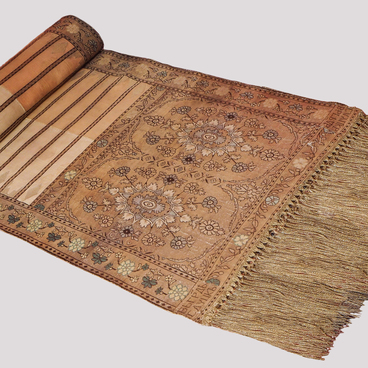One of the largest monuments of stone architecture of ancient Smolensk is the Cathedral on the Protoka. The cathedral was erected in the late 12th — early 13th centuries on the Protoka stream, located on the left bank of the Dnieper (now the Sheinovka district on the eastern outskirts of Smolensk). The Cathedral on the Protoka was a large classical four-pier cross-in-square church. The ancient name of the cathedral is unknown. The later popular name of the cathedral is ‘Great Savior in the Trenches’.
In 1867, the builders of the Oryol-Vitebsk railway, who used the high ‘mound’ as a quarry for the extraction of rubble, discovered a monument. The primary research was carried out by Polesskiy-Shchepillo, a teacher at the Smolensk gymnasium. These excavations provided the first information about the monument, which was not then completely uncovered.
Fundamental excavations of the cathedral began under the leadership of Doctor of Historical Sciences, Professor Nikolai Nikolaevich Voronin in 1962-1963. The entire temple was excavated. The architectural forms and construction techniques gave grounds to date the monument to the end of the 12th — the beginning of the 13th centuries, and according to the format of bricks — 1180-1190 years. It turned out to be difficult to determine the exact date of construction, since this cathedral complex was not built immediately. Each part of it was erected as a separate finished structure, and the construction of the complex continued further only after one of its elements was finished. Thus, it can be assumed that the construction of the temple took more than ten years.
During archaeological excavations, numerous fragments of ancient paintings were discovered. The fresco ‘Seven Saints’ was discovered in 1962 during the excavation of the 5th arcosolium of the northern wall — a niche for burial. The prophet John the Baptist is depicted in the center of the fresco. The upper part of the fresco is badly damaged, significant fragments of figures have been lost, including heads with halos. Therefore, the identification of the saints is extremely difficult. It is likely that patronage saints are represented here — the defenders of the deceased and his family members.
After the research completion in the mid-1960s, the fresco was transferred to the Smolensk Museum and is now in the second hall of the State Historical Museum’s permanent exhibition “The Smolensk Land within the Old Russian State”
In 1867, the builders of the Oryol-Vitebsk railway, who used the high ‘mound’ as a quarry for the extraction of rubble, discovered a monument. The primary research was carried out by Polesskiy-Shchepillo, a teacher at the Smolensk gymnasium. These excavations provided the first information about the monument, which was not then completely uncovered.
Fundamental excavations of the cathedral began under the leadership of Doctor of Historical Sciences, Professor Nikolai Nikolaevich Voronin in 1962-1963. The entire temple was excavated. The architectural forms and construction techniques gave grounds to date the monument to the end of the 12th — the beginning of the 13th centuries, and according to the format of bricks — 1180-1190 years. It turned out to be difficult to determine the exact date of construction, since this cathedral complex was not built immediately. Each part of it was erected as a separate finished structure, and the construction of the complex continued further only after one of its elements was finished. Thus, it can be assumed that the construction of the temple took more than ten years.
During archaeological excavations, numerous fragments of ancient paintings were discovered. The fresco ‘Seven Saints’ was discovered in 1962 during the excavation of the 5th arcosolium of the northern wall — a niche for burial. The prophet John the Baptist is depicted in the center of the fresco. The upper part of the fresco is badly damaged, significant fragments of figures have been lost, including heads with halos. Therefore, the identification of the saints is extremely difficult. It is likely that patronage saints are represented here — the defenders of the deceased and his family members.
After the research completion in the mid-1960s, the fresco was transferred to the Smolensk Museum and is now in the second hall of the State Historical Museum’s permanent exhibition “The Smolensk Land within the Old Russian State”



